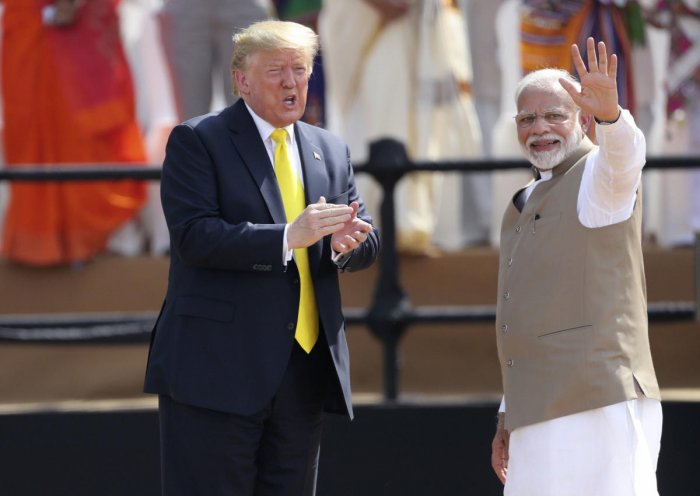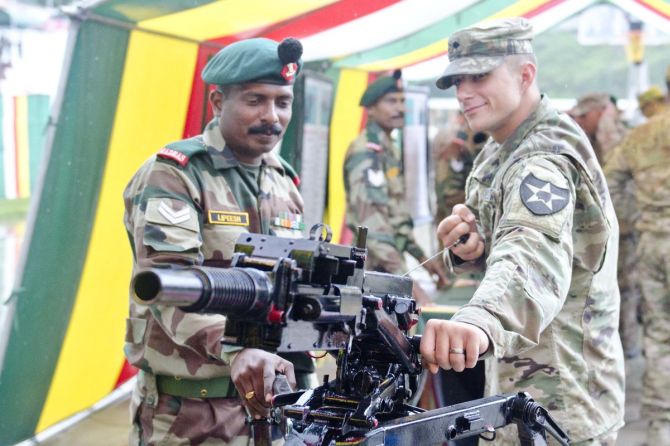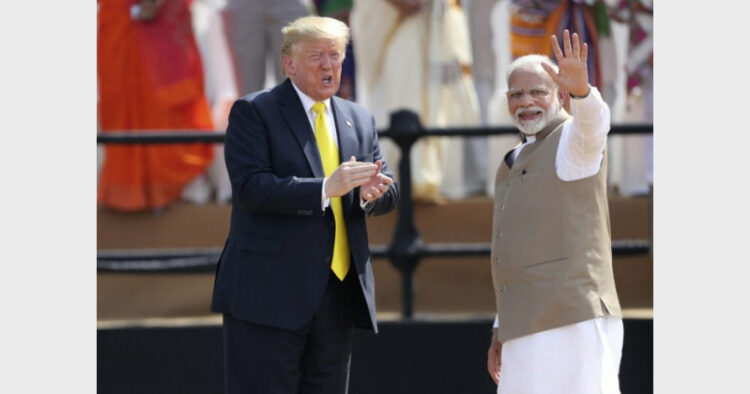Both President Trump and PM Modi have found wide acceptance on their pledge of boosting national security and keeping the interests of their own citizens ahead of others.
– Mayank Gupta

Climate change is indeed a challenge and so is the global economic slowdown. But what is that one thing which poses an imminent threat to the civilized world of today? Terrorism, it is. The 9/11 attacks on the US soil, terror attack on the Indian Parliament in 2001, 2008 Mumbai attacks and many other acts of terrorism on foreign missions of the US and other critical sites are all a part of the bigger conspiracy. Virtually all these attacks were planned and executed by Islamist forces that treat both the West and the Hindu-majority India as their prime adversaries. But in the end, terror produces no gains for the perpetrators. In fact, warring factions have made such countries as Syria, Iraq and Libya failed nations. The US-led forces have decisively rid the Middle East region of the fundamentalist forces led by ISIS.
In this light, we are to see the first visit of the US President Donald Trump to India. Trump will be in the world’s largest democracy, one can also say the world’s largest market in the same breath, for nearly 36 hours with his visits to the Sabarmati Ashram, the newly-built Motera Stadium and Rajghat consuming much of the newsroom discussions. This comes in the backdrop of many things that matter to India. For example, Trump has not been very kind to India with respect to tariffs and even termed us ‘tariffs king’. The country’s special status under the Generalised System of Preferences was revoked last year and tariffs on our exports of steel and other goods were hiked. At the same time, Trump sought Indian market access for the US dairy and agriculture products. That India levies a 100 percent import duty on Harley Davidson motorcycles became the talk of the town when Trump complained of it.
But should the citizens of both the countries and the news media be concerned about India and the US bilateral trade alone? Take this for example- the US has a trade deficit with India, which means we buy less than what we sell them, and hence India shouldn’t be considering trade as primary when US-India relations are talked about; similarly, the US has trade deficit with many other nations, and India is way down in this list that has China at the top. Trade, of course, is an important issue for discussion between the two leaders but as stressed earlier, it is terrorism, regional security and related themes that should lead the agenda. And there are valid reasons for this.
That India’s neighbour and world’s second largest economy, China, is reviving its ancient Silk Road has been a topic covered by many international publications. There is a consensus among all critics that the Belt and Road Initiative (BRI) is nothing but trapping smaller nations into debt that is being extended in the name of infrastructure development by Chinese government or state-run banks. This not only has repercussions for countries participating in the BRI but also for outsiders including India and the US. China now has a military support base in Djibouti and the dragon’s hold in Sri Lanka is no secret. This and China’s unfailing support to Pakistan are India’s topmost security concerns. And that China is quietly tightening its control over the South China Sea by undermining the interests of other nations is upsetting the United States. China’s communist model has always irked the US, a sworn capitalist power.

It is against this backdrop that we need to look at Trump’s visit. Both President Trump and PM Modi have found wide acceptance in their home countries on their pledge of boosting national security and keeping the interests of their own citizens ahead of others. Trump won the presidential poll on the promise of curbing illegal migration to the US from its southern border and Modi’s party pitch is on similar lines. And there is a convincing rationale. Undocumented migrants not only lay their claims on the already-scarce resources, they undermine national security. And this, at a time of heightened dose of Islamist fundamentalism propagated by India’s staunch adversary Pakistan, cannot be overlooked. In fact, there have been many reforms by India that have been loudly protested against by Pakistan in multilateral forums; however, there were no takers of Pakistan’s outcry. The abrogation of Article 370 to assimilate Jammu and Kashmir with mainstream India is an example.
On the other side, the US has time and again proved to be a guardian of democratic principles and human rights. Pakistan has on several occasions been reprimanded for its support to terror groups by the Trump administration. When China made all possible efforts to thwart India’s bid to list Masood Azhar as global terrorist by the United Nations, it was the backdoor diplomacy of the US that came to India’s rescue. Similarly, the interests of the US and its allies in the Indian Ocean region are safe as long as India remains a formidable contender to China’s growing military might. Pakistan has been a breeding ground for many transnational terror groups and it is India alone that can contain such activities. The country doesn’t shy away from hitting the belligerents inside their safe havens and the surgical strikes by the Indian armed forces were widely lauded by the international community. It was for a reason that the US firmly steered clear of any criticism or condemnation of these strikes.
Lately, the US has come up with Blue Dot Network, a global infrastructure development initiative. Announcing the same at the Indo-Pacific Business Forum last year, the US made it clear that the same will be a multi-stakeholder project with Japan and Australia already on board. But is Blue Dot a direct challenge to BRI? Probably, yes. While China has been using coercive methods and its debt trap to lure nations, Blue Dot is the US way to persuade countries in the region to partner with progressive forces that will fund infra projects on transparent terms and have environmental concerns and labour practices as parameters to grade them. Sans India, however, the Blue Dot Network is anything but complete. Trump’s visit can take this agenda forward.
All that said, the ultra-practical President of the US, who doesn’t mince words in reprimanding his western allies for not contributing enough money to keep NATO going, knows what he wants from India. It is for a cause why he has been showing unprecedented enthusiasm for a week ahead of his India visit. India, he knows is as much a soft-power force, both Google and Microsoft heads are Indian-born, as it is a hard power. One of the biggest importer of arms, although India has never been the first mover when it comes to conflicts, India is not only a market for US weapons but also the long-trusted geopolitical partner. More than the trade deals that President Trump will sign with Modi while in India, it will be the behind-the-scenes understanding and pledges of both leaders that will shape the future course for both democracies. For fundamentalism, terrorism and neo-colonialism of China to be capably tackled, the world needs the Modi-Trump combine.
(Author is a Financial Consultant and writes on current affairs and geo-politics)













Comments